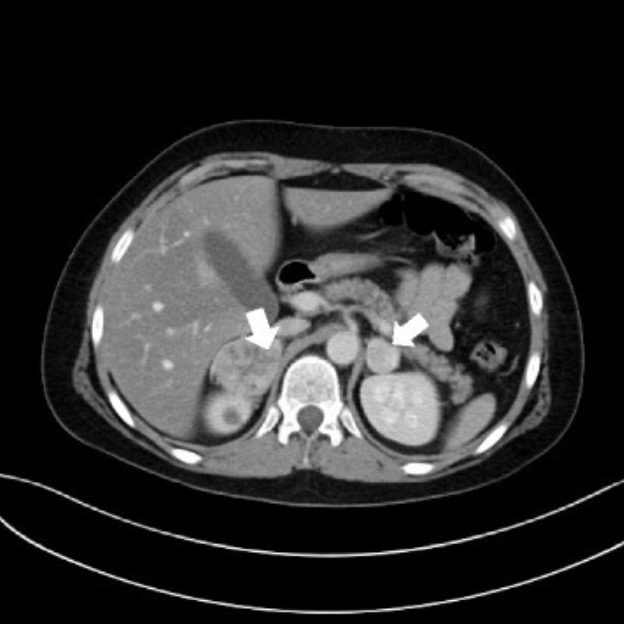Playlist
Show Playlist
Hide Playlist
Pheochromocytoma
-
Slides PheochromocytomaMENSyndrome Surgery.pdf
-
Download Lecture Overview
00:00 Welcome back. Thanks for joining me on this discussion of pheochromocytoma in the section of general surgery. 00:07 Pheochromocytoma used to be one of my favorite topics as a medical student because the word is kind of fun to say. 00:14 I challenge you to say it ten times fast. Now, let’s get started. 00:18 Pheochromocytomas are catecholamine secreting tumors specifically located the vast majority of the time in the adrenal medulla. 00:27 Remember, the adrenal gland has multiple layers. 00:30 In the inner core called the adrenal medulla, norepinephrine and epinephrine are secreted. 00:36 Also important to remember, 10% of pheochromocytomas are actually outside of the adrenal gland. 00:44 The rule of 10 is important to mention with pheochromocytomas, as 10% are malignant and 10% are familial. 00:52 These are commonly called paragangliomas or organ of Zuckerkandl. 01:01 In this image marked in red is the organ of Zuckerkandl or a paraganglioma commonly found at the aortic bifurcation. 01:11 They contain neural crest tissue usually at the level of the aortic bifurcation or at the inferior mesenteric artery takeoff. 01:19 What are some of the common symptoms of pheochromocytoma? Here, you see the gentleman with episodic headaches. They can be quite severe. Diaphoresis, also catecholamine-induced; and very importantly, tachycardia. Now, the combination of episodic headaches, diaphoresis, and tachycardia is a classic association and incredibly high-yield. 01:46 I recommend that you keep that in mind. However, clinically, this triad is actually a rare finding. 01:53 Remember very importantly, pheochromocytomas can result in potentially fatal cardiac arrhythmias. 02:00 Therefore, you must have a high index of suspicion in patients with difficult to treat hypertension. 02:06 Speaking of which, most patients with pheochromocytoma result in hypertension and the reason is because of the increased catecholamine secretions. 02:19 Let’s take a look at what laboratory findings may help you diagnose a pheochromocytoma. 02:26 Unfortunately, your general chemistries and your CBCs may not be very helpful. 02:31 However, specific to the diagnosis of pheochromocytoma are urine or plasma metanephrines. 02:39 Plasma metanephrines are more sensitive but less specific and conversely, urine catecholamines and metanephrines are less sensitive but more specific. 02:50 A downfall of urine catecholamines is that it requires a 24-hour urine collection. 02:56 That can be difficult on an outpatient basis.
About the Lecture
The lecture Pheochromocytoma by Kevin Pei, MD is from the course General Surgery.
Included Quiz Questions
Where are the majority of pheochromocytomas located in the body?
- Adrenal medulla
- Adrenal cortex
- At the aortic bifurcation
- Pancreas
- Near the inferior mesenteric artery
Which laboratory test is most specific for diagnosing a pheochromocytoma?
- 24-hr urine catecholamines and metanephrines
- Spot urine catecholamines and metanephrines
- Plasma metanephrines
- Serum catecholamines
- Pheochromocytoma is a clinical diagnosis based off symptoms only
All of the following are classic symptoms of pheochromocytoma EXCEPT?
- Diarrhea
- Episodic headaches
- Diaphoresis
- Hypertension
- Arrhythmias
Customer reviews
5,0 of 5 stars
| 5 Stars |
|
1 |
| 4 Stars |
|
0 |
| 3 Stars |
|
0 |
| 2 Stars |
|
0 |
| 1 Star |
|
0 |
Brief and easy-to-follow introduction to pheochromocytoma. Very clearly presented with great visual aids!





